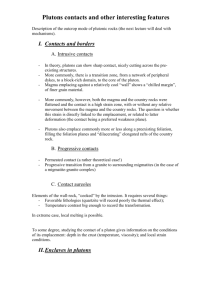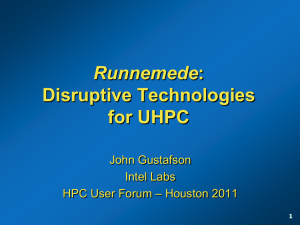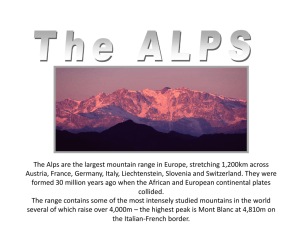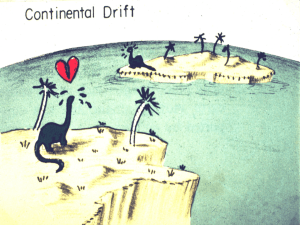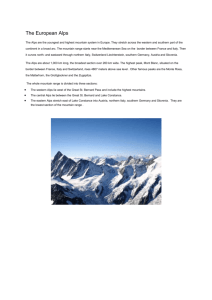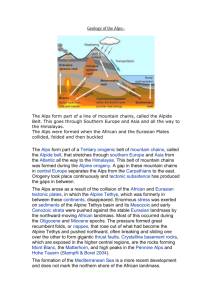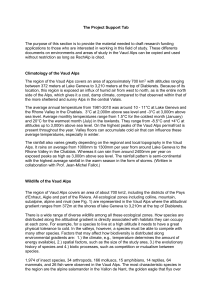Orogenesis Summary
advertisement
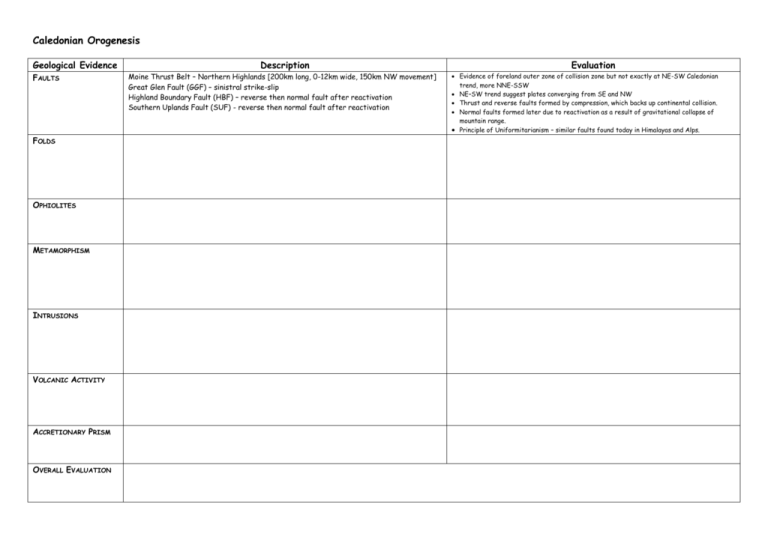
Caledonian Orogenesis Geological Evidence FAULTS FOLDS OPHIOLITES METAMORPHISM INTRUSIONS VOLCANIC ACTIVITY ACCRETIONARY PRISM OVERALL EVALUATION Description Moine Thrust Belt – Northern Highlands [200km long, 0-12km wide, 150km NW movement] Great Glen Fault (GGF) – sinistral strike-slip Highland Boundary Fault (HBF) – reverse then normal fault after reactivation Southern Uplands Fault (SUF) - reverse then normal fault after reactivation Evaluation Evidence of foreland outer zone of collision zone but not exactly at NE-SW Caledonian trend, more NNE-SSW NE–SW trend suggest plates converging from SE and NW Thrust and reverse faults formed by compression, which backs up continental collision. Normal faults formed later due to reactivation as a result of gravitational collapse of mountain range. Principle of Uniformitarianism – similar faults found today in Himalayas and Alps. Variscan Orogenesis Name of Evidence Faults Folds Ophiolites Metamorphism Intrusions Volcanic Activity Accretionary Prism Overall Evaluation Description Evaluation Alpine Orogenesis Name of Evidence Faults Description East-West trending faults – Mere Fault in Chalk Downs is a reverse fault. Evaluation Reverse faults suggest compression so are consistent with continental collision and could be the ripple effect of the Alpine Orogenesis. Folds East-West trending folds – Weald Anticline, Hampshire Basin, London Basin. Gentle Folds suggest compression so are consistent with continental collision and could be the ripple effect of the Alpine Orogenesis. Ophiolites None Have to look at evidence from the Alps in central Europe. Metamorphism None Have to look at evidence from the Alps in central Europe. Intrusions None Have to look at evidence from the Alps in central Europe. Volcanic Activity None Have to look at evidence from the Alps in central Europe. Accretionary Prism None Have to look at evidence from the Alps in central Europe. Overall Evaluation The fold mountains of the Alps were formed in the Tertiary. It has often been assumed that ripple effects of these Alpine movements caused the Tertiary folding and faulting of southern England. However, it is not certain that crustal movements as far north as Britain could have resulted from Alpine compression. The structures formed over southern England could reflect crustal readjustments following the start of sea-floor spreading in the North Atlantic. North Atlantic Igneous Tertiary Province (NATP) Name of Evidence Extrusive Igneous Activity Plutonic Igneous Activity Tensional Structures Description Trotternish Peninsular, Isle of Skye Low viscosity flood basalts – forming horizontal plateaux & distinctive flat topped hills. Each lava flow 4-8m thick Overall thickness of the Skye Main Lava Series – 2000m Columnar jointing – Kilt Rock Vesicular basalt Weathering of lava flows in the hot, humid climate of early Tertiary caused red laterite (soils) to form. Cuillin Hills, Isle of Skye Gabbro plutons – large, coarse-grained intrusions (10km wide) Layering – cumulates of Peridotite Evaluation Basaltic flood basalts consistent with the rifting of a continent due to a mantle plume head. Red Hills, Isle of Skye Granite plutons – large, coarse-grained intrusions (10km wide) Younger than gabbro intrusions Granite plutons due to fractional crystallisation of slow cooling basaltic magmas. Isle of Skye Dyke swarms NW-SE trend Dyke swarms indicate tensional stress as gaps have to be created for dykes to be intruded into the country rock. However, trend of NWSE not consistent with a NE-SW plate boundary through Iceland now. Possibly an aulacogen (a failed arm of a triple junction of a plate tectonics rift system). Isle of Arran 300 dykes in 3km Overall Evaluation Gabbro plutons consistent with slow cooling of basaltic magma deep underground. Layering (cumulates) consistent with slow cooling and fractional crystallisation. Very good evidence for a constructive plate margin and tensional stress. Similar rocks can be found being formed now in Iceland which sits over the mantle plume now (Principle of Uniformitarianism). Same types and ages of rocks in Greenland, which was once joined to Scotland before rifting. Hotspot trail either side of Iceland – (Greenland-Faroes Ridge) evidence for plate movement.





